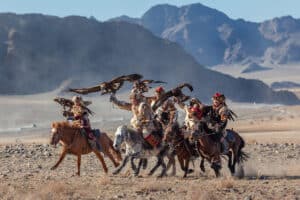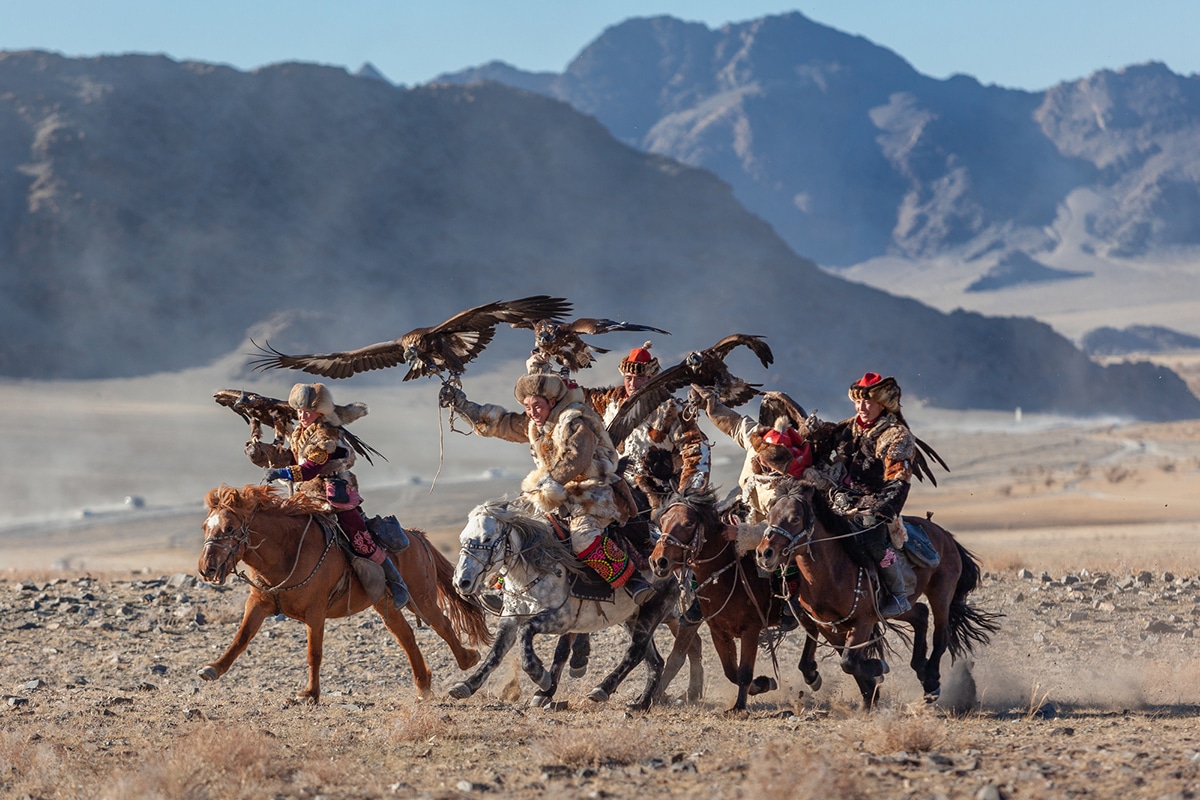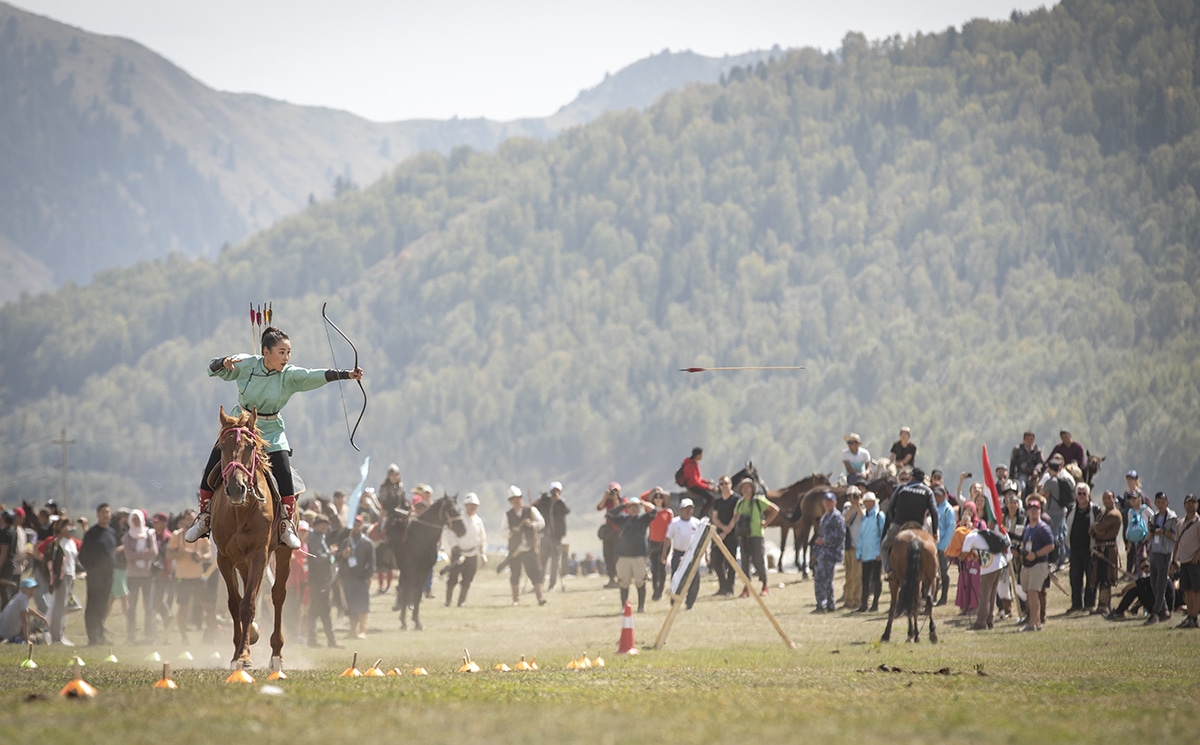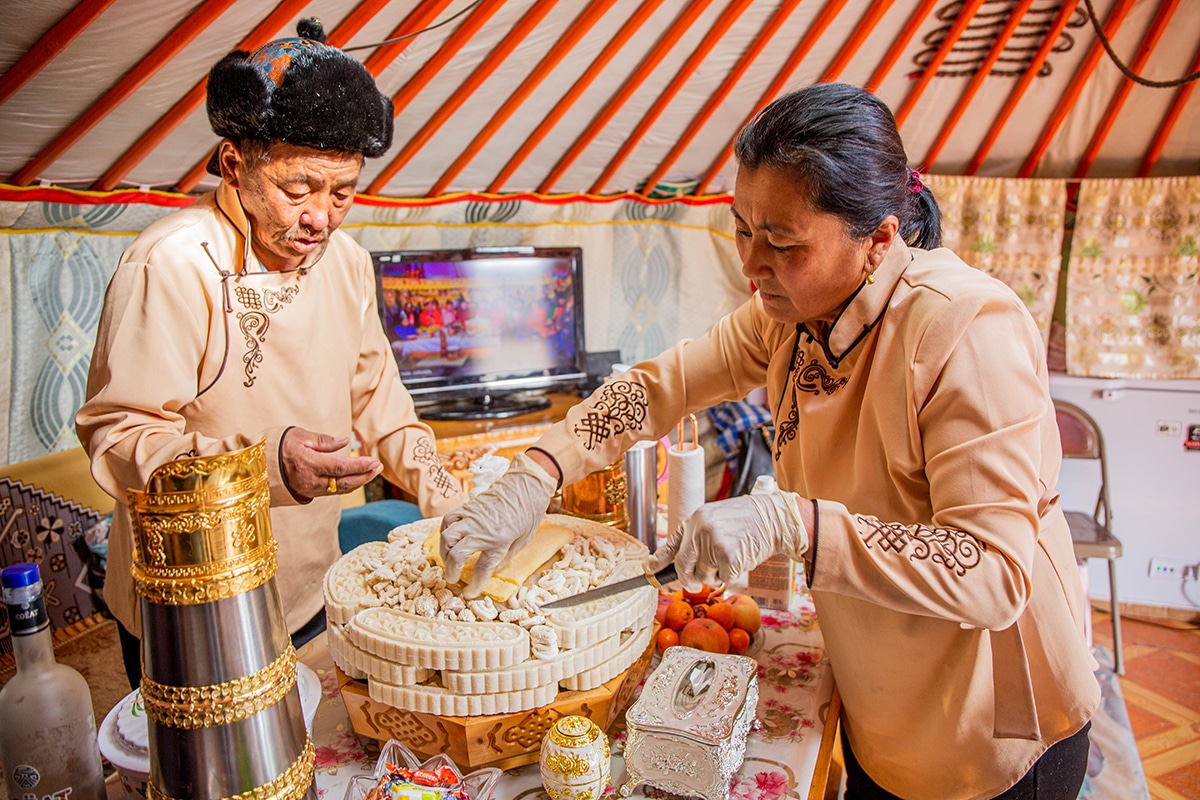9 Main Buddhist Monasteries to Visit in Ulaanbaatar
These monasteries, museums, and temples in Ulaanbaatar are the best place to learn, practice, and witness Mongolia’s most practiced religion, Buddhism.
- January 31, 2024
It’s hard for me to put into words the importance of Buddhism to the people of Mongolia. It’s also hard for me to explain the nuances of Mongolian Buddhism versus what you find in places like Tibet, Nepal, or China.
To start, in Mongolia, the religion is a strange mix of Tibetan Buddhism, Tengrism, and Shamanism. From the prescribed set of ceremonies to the defined set of religious texts that guide life in a monastery today, what you’ll witness in Mongolia’s Buddhist temples is unlike anything you’ll experience anywhere else in the world.
Foreign visitors who are interested in learning these nuances and the unique cultural landscape that shaped Mongolian Buddhism should start by visiting the 9 main monasteries listed below.
The best time to visit and experience authentic religious services is during the daily service, which is usually held first thing in the morning. This is the best time to listen to monks chant, ask for a prayer, and get to know these sacred places and practices on a more intimate level.
Every time I enter one of these monasteries I learn something new, and I always leave feeling grounded and humbled. Despite the first temple on this list, Gandan Monastery, being one of the city’s biggest tourist attractions, don’t let that stop you from visiting. There’s a reason every travel guide lists it as one of the best things to do in Mongolia’s capital city.
Even if you don’t consider yourself religious, these are important monasteries and museums to better understand Mongolia’s history, from the 13th century to today. From the Yuan Dynasty and the naming of the first Bogd Gegeen to the thousands of monks who were killed during the political purges of the 1930s and the practice’s resurgence after the fall of communism, these places are also a symbol of Mongolian independence.
I’ll do my best to explain the history of Buddhism in Mongolia in simple terms and why these are the best Buddhist monasteries, temples, and museums to visit in Ulaanbaatar:
Table of Contents
History of Buddhism in Mongolia
The history of Buddhism in Mongolia is long and complicated. I’m going to attempt to explain this as simply as I can. That way, you can visit any of these monasteries with at least a foundation of knowledge. For more complicated questions, tour guides or guide books can help fill in the rest. Here it goes.
Mongolia’s history with Buddhism dates back to the 13th century and Kublai Khan. At that time, he was the leader of the Yuan dynasty. While he had always been fascinated by Buddhist philosophy, he didn’t officially convert to Buddhism until 1271 in a move to win Chinese allegiance. The plan worked and he was able to expand the Mongol Empire with the help of the Chinese to reach from the Pacific Ocean to the Black Sea, and from Siberia to what is now Afghanistan.
Almost 100 years later, following the collapse of the Mongol Empire in 1368, Mongols rejected their Buddhist beliefs and returned to shamanism.
Buddhism once again reemerged in the 16th and 17th centuries when Altan Khan, a Mongol military leader, invited the 3rd Dalai Lama to Mongolia, reigniting interest in the practice.
By the beginning of the 20th century, Mongolia was home to 583 monasteries and temple complexes and an estimated 112,000 monks.
Additionally, Ulaanbaatar was the seat of the preeminent living Buddha of Mongolia, the 8th Jebtsundamba Khutuktu. Also known as the Bogdo Gegen and later as the Bogd Khan, he was the top-ranking Lama in Mongolia.
Things once again took a turn for the worse when Mongolia joined the USSR in 1924 and Khorloogiin Choibalsan later became the leader of the Mongolian People’s Republic. A close ally of Joseph Stalin, Choibalsan was a nasty dictator who organized Stalinist purges in Mongolia between 1937 and 1939. During the Stalinist repressions almost all of the country’s temples, statues, artifacts, and cultural heritage was destroyed. It’s also estimated 18,000 monks and lamas were killed.
In the early 1990s, following the democratic revolution and the return of the country’s independence, Buddhism once again became the most practiced religion in Mongolia.
The Most Practiced Religion in Mongolia Today
Buddhism is the largest religion practiced in Mongolia today. The country is home to an estimated 200 temples and a monastic sangha of around 500 Mongolian monks and nuns.
Mongolia practices Gelug or “Yellow hat” Buddhism and the architecture is the same as a Tibetan-style Buddhist monastery. Erdene Zuu Monastery, Mongolia’s oldest monastery, is built in this style, using the traditional colors of Tibetan Buddhism and architecture, yellow, green, red, white, and blue.
If you listen closely, you’ll hear the word “khiid” often. Khiid simply means monastery in the Mongolian language.
When you enter a temple complex, look for the beautiful thangka paintings, paintings done on cotton or silk appliqué usually depicting a Buddhist deity, scene, or mandala, usually found inside. The Zanabazar Museum near Sukhbaatar Square is another great place to see these paintings. The small museum is also home to an impressive collection of paper mache masks, Buddha statues, important texts, and ancient artifacts.
In 2023, drama erupted when the Dalai Lama declared the 10th Jebtsundamba Khutughtu had been reborn in Mongolia, and not China.
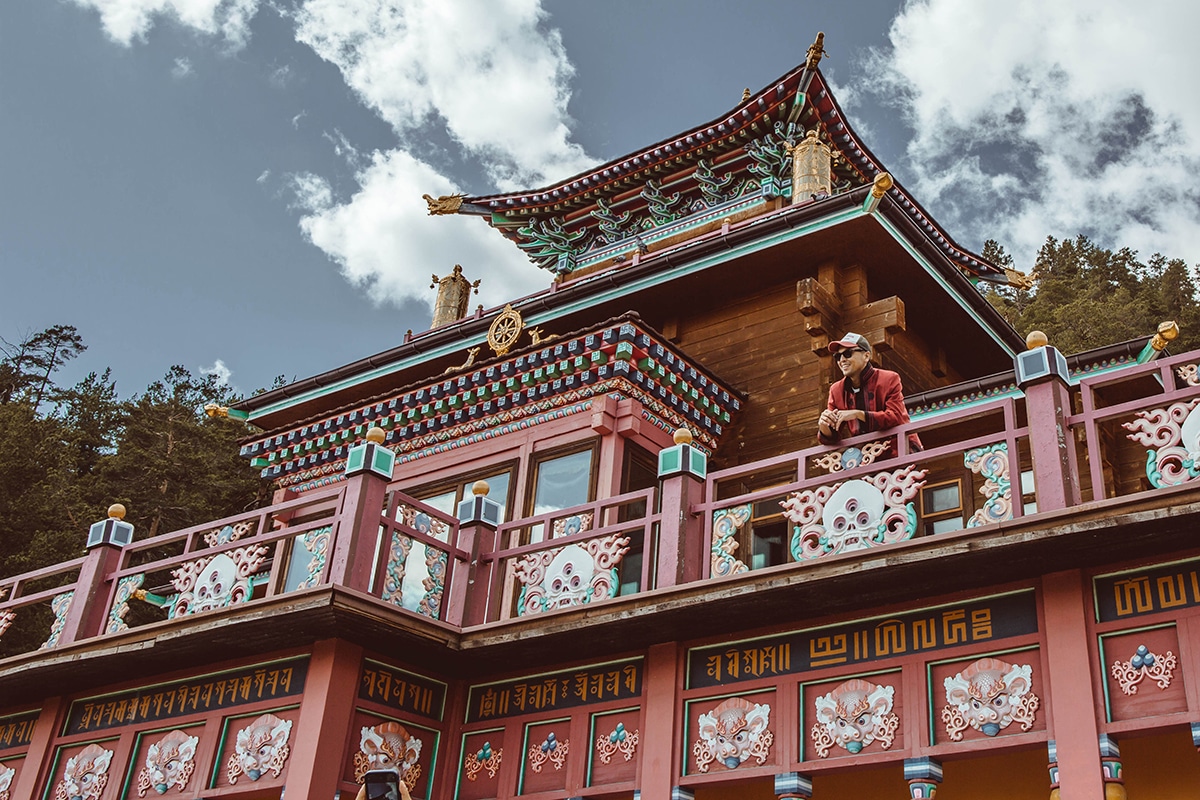
9 Main Buddhist Monasteries to Visit in Ulaanbaatar
Table of Contents
Gandantegchinlen Monastery
Mongolia’s largest monastery, often called Gandan for short, was built in the beginning of the 19th century. At its peak in the early 20th century, more than 5,000 monks and nine colleges of Buddhist philosophy made up this entire complex. Gandantegchinlen translates to “the great place of complete joy.”
Unfortunately, during the communist period the monastery was very badly damaged and was closed in 1939. The monastery reopened in 1944 when Stalin allowed it to be the only monastery to operate. This was his way of showing the world how tolerant of other religions and beliefs he was. Meanwhile, he was busy destroying the majority of other Buddhist sites and religious complexes around the country, also killing the monks and lamas who lived there.
While Gandan has a dark history that shouldn’t be forgotten, visiting today is a peaceful and wonderful experience. When you visit, purchase a ticket to the main temple where you’ll find a massive statue decorated with precious stones of Avalokitesvara, the symbolic bodhisattva of compassion.
One of the other important temples inside the complex’s walls is the Didan-Lavran Temple. This is where the 13th Dalai Lama stayed just before the start of the British invasion of Tibet in 1904.

Dashchoilin Monastery
Another one of my favorite monasteries, Dashchoilin Monastery is one of the city’s most revered monastic complexes. The complex draws Buddhist lamas and visitors from around the world with its cultural and spiritual significance.
Home to a sizable community of monks, the complex boasts a unique blend of traditional Mongolian and Tibetan architectural styles. The three yurt complexes are adorned with vibrant murals, intricate woodwork, and ornate sculptures inside.
Dashchoilin Khiid is renowned for its commitment to preserving and promoting Buddhist teachings, as well as serving as a center for meditation and religious ceremonies. Its tranquil surroundings and the palpable sense of devotion contribute to its reputation as one of the best monasteries to visit in Ulaanbaatar, offering a captivating glimpse into Mongolia’s spiritual heritage.
Samya Khiid
Another noteworthy monastery to visit, Samya Khiid is celebrated for its unique charm and warm hospitality.
Like Dashchoilin Monastery, Samya Khiid serves as a spiritual hub and is recognized for its role as a center for religious activities, meditation, and ceremonies. For anyone who is seeking a deeper understanding of Mongolia’s spiritual heritage, this is the place to visit.
The monastery’s tranquil ambiance and commitment to preserving Buddhist teachings contribute to its status as a prominent and respected religious complex in Ulaanbaatar.
Geser Sum Monastery
Geser Sum Monastery is distinguished by its historical significance, tracing its roots back to the 18th century and the Qing Dynasty.
What sets Geser Sum apart is its association with the epic of Geser Khan, a legendary hero of Mongolian folklore. Visitors are drawn to the monastery not only for its architectural beauty but also for the cultural resonance embedded in its history.
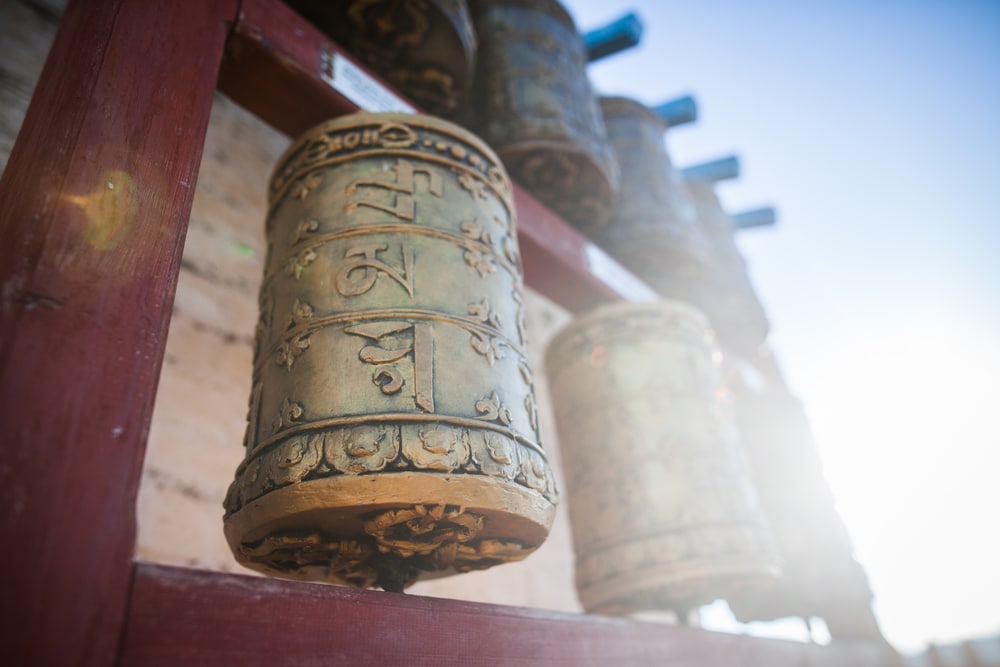
Naropa Monastery
Sitting on a quiet hillside just outside the capital, Naropa Monastery is one of the best-kept spiritual secrets in Ulaanbaatar. It’s free to visit the monastery and the fresh air surrounding it will help you clear your mind. Reach out to the monastery to try to meet with teacher Naro Banchen Gegeen during your visit. His work leading the Naropa Institute is inspiring!
If you’d like to study or get a better understanding of Mongolian Buddhism, this is a quiet, beautiful place to do so.
Aglag Buteeliin Khiid
Two hours north of Ulaanbaatar, Aglag Buteeliin Khiid, is one of the best day trips you can make from the capital. It’s also one of the strangest. I can guarantee you won’t find a monastery like this anywhere else in the world. Aglag Buteeliin Khiid is also the only place you’ll find the body of a mummifed monk in Mongolia.
The monastery is home to Lam Pürevbat, a Mongolian painter, art collector, museum director of the Zanabazar Mongolian Institute, and Buddhist teacher. He is one of the most influential figures in modern Mongolian Buddhism.
A spiritual refuge and nature sanctuary, giant, stone-carved sculptures snake their way up the mountain where Aglag sits peacefully. Rumor has it Lam Pürevbat carved each original statue himself.
Inside the main temple, there are thangka paintings and strange display of taxidermy. From there, it only gets weirder. Upstairs, a mix and match display of evil-looking beasts come to life.
I don’t want to spoil this experience for you, but I can tell you this is one of the strangest, off-the-beaten path places you’ll find in all of Mongolia.

Manzushir Monastery
Located in Bogd Khan Mountain National Park near Ulaanbaatar, Manzushi Monastery is a historical and cultural site with significant religious importance. Originally established in the 18th century, the monastery complex was active until the early 20th century before being destroyed by the communist regime.
Interesting facts about Manzushir Monastery include its stunning natural setting, nestled within the picturesque landscape of the Bogd Khan Mountain. The monastery complex features various buildings, stupas, and prayer wheels, showcasing a mix of Tibetan and Mongolian architectural styles. Visitors can explore the ruins of the main temple, which was once an important center for Buddhist learning. Manzushir Monastery is not currently an active religious center with resident monks.
Bogd Khan Winter Palace
Also known as the the Green Palace or Green Temple of the River, the palace is not an active monastery. However, you can’t deny it’s importance in Mongolia’s history of Buddhism. I’ll quickly explain why.
Built in the early 20th century, the palace served as the winter residence for the last Bogd Khan. The Bogd Khan was both the spiritual and political leader of Mongolia.
Inside the complex, made up of various buildings, temples, and residences, tourists who visit have the unique opportunity to see the artifacts, thangkas, and personal belongings of the Bogd Khan. Including the clothes of the Bogd Khan’s elephant, the bedrooms of the Bogd Khan and his wife (they slept separately), their clothes, and other religious and royal garments.
Visiting here provides valuable insights into Mongolia’s religious and political past.

Choijin Lama Temple and Museum
The Choijin Lama Temple and Museum is one of Ulaanbaatar’s most important cultural and religious landmarks.
Unlike the Bogd Khan Winter Palace, which served as the Bogd Khan’s residence, the Choijin Lama Temple served as his center for worship and spiritual learning.
Also constructed in the early 20th century, the temple complex showcases impressive architectural marvels and houses a wealth of religious artifacts, thangkas, and sculptures. Including a prized red coral tsam mask.
Together with the Bogd Khan Winter Palace, these two attractions collectively represent the nation’s rich tapestry of history and the insight into the days of the country’s last king.
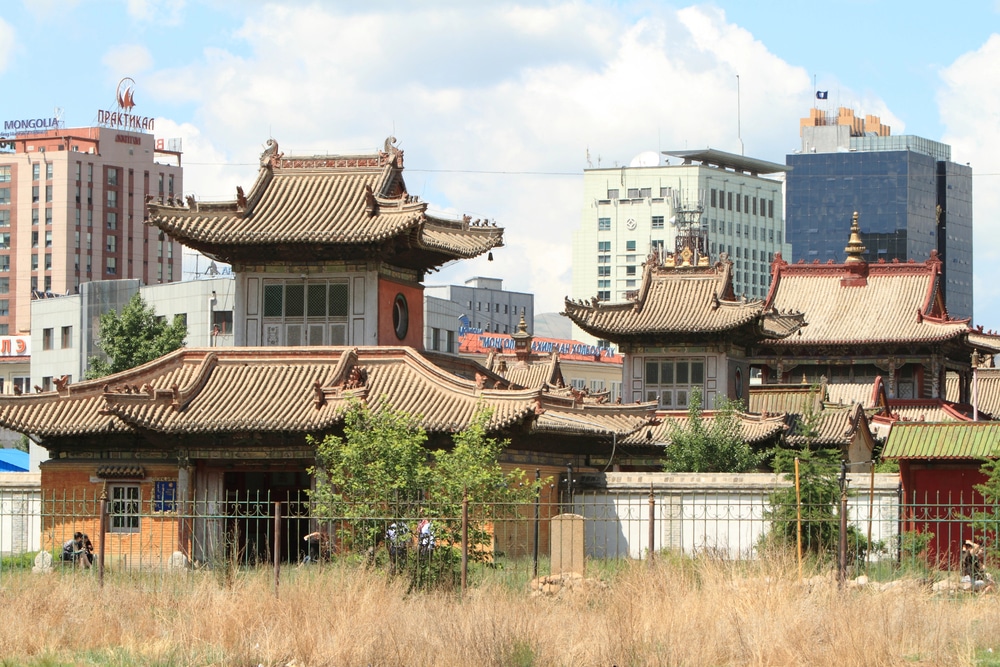
Tips for Entering a Buddhist Monastery
To fully appreciate a visit to any monastery on this list, it’s advisable for tourists to adhere to certain etiquette.
First, follow the lead of the locals and see it’s appropriate to remove your shoes before entering as a sign of respect.
Additionally, visitors should avoid pointing their feet towards religious artifacts or monks. This is considered impolite in Mongolian culture.
Taking photos should be approached with sensitivity. Seek permission before capturing images, especially during religious ceremonies.
By respecting these cultural norms, tourists can enjoy a meaningful and enriching experience while fostering a sense of mutual respect with the monks and the local community.
Author: Breanna Wilson
Hi! Sain uu! I’m Breanna, an American travel writer and adventurer living in Ulaanbaatar, Mongolia for more than 5 years. I’ve written for and been featured in Condé Nast Traveler, CNN, Forbes, and the New York Times, among others. Read more of my Mongolia travel articles here.
Join my Private Travel Group on Facebook
Proudly Based in Ulaanbaatar, Mongolia
© 2024 Meanwhile in Mongolia



